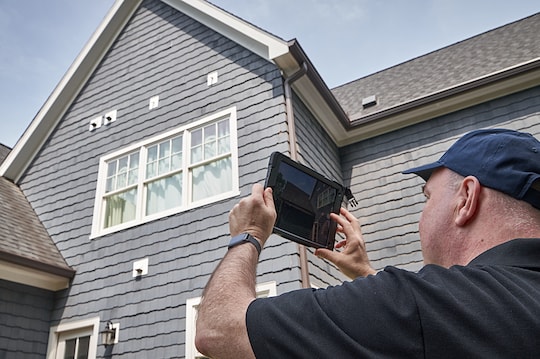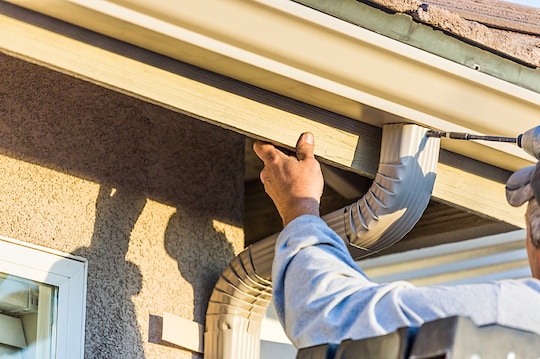
Hiring a roofing contractor is an act of trust. You're putting the long-term protection of your home into the hands of someone you may have just met. That can be nerve-wracking, unless you've done your research. Here are three things to look for that can help you choose a roofing contractor with confidence:
Reviews: Always check consumer reviews. That's where you'll get first-hand insights into how easy the contractor was to work with, how well the crew cleaned up after the work was done, and the perceived value of the overall project.
Certifications: Many manufacturers offer certification programs to installers who are most familiar with the installation of their products. To qualify for certification, a roofer will likely have to have a minimum number of years in the business, be properly insured, licensed where required, and maintain good standing with the Better Business Bureau. These certified contractors can usually offer you enhanced warranties that are backed by the manufacturer. For example, GAF, North America's largest roofing manufacturer, offers the Master Elite® Contractor designation to less than 2% of all roofing contractors. Only Master Elite Contractors® can offer the GAF Golden Pledge® Limited Warranty* with up to 30 years of Workmanship coverage.
The Best of the Best: If the GAF Master Elite® badge identifies a rare breed, the GAF Master Elite® President's Club Award Winner badge takes it one step further. Less than half of Master Elite® contractors qualify for President's Club status, and they do that by demonstrating excellence in three key areas: Performance, Reliability, and Service. The badge says that over the course of the prior year, the company installed a minimum number of complete GAF roofing systems that qualify for GAF's highest warranties while maintaining consistently excellent customer reviews. If you're looking for experience and excellence in residential roofing, no other designation means as much.
Best of luck with your next roofing project. Remember you can always find contractors certified by GAF** at the GAF Contractor Locator. Check under "Certifications and Awards" for individual details such as GAF GAF Master Elite® President's Club 1 Star Winners, 2 Star Winners, and 3 Star Winners.
*Definition of Lifetime: The word "Lifetime" means as long as you, the original owner(s) [or the second owner(s) if coverage was properly transferred during the Smart Choice Protection Period], own the property where the shingles and/or accessories are installed. The Lifetime warranty is applicable only to shingles and accessories installed on a single-family detached residence owned by individuals. For any other type of owner or building, such as a corporation, governmental entity, religious entity, condominium or homeowner association, school, apartment building, office building, or multi-use structure, the length of the warranty is 40 years. See the GAF Shingle & Accessory Limited Warranty, GAF Roofing System Limited Warranty and GAF Golden Pledge Limited Warranty for complete coverage and restrictions.
**Contractors enrolled in GAF certification programs are not employees or agents of GAF, and GAF does not control or otherwise supervise these independent businesses. Contractors may receive benefits, such as loyalty rewards points and discounts on marketing tools from GAF for participating in the program and offering GAF enhanced warranties, which require the use of a minimum amount of GAF products.



